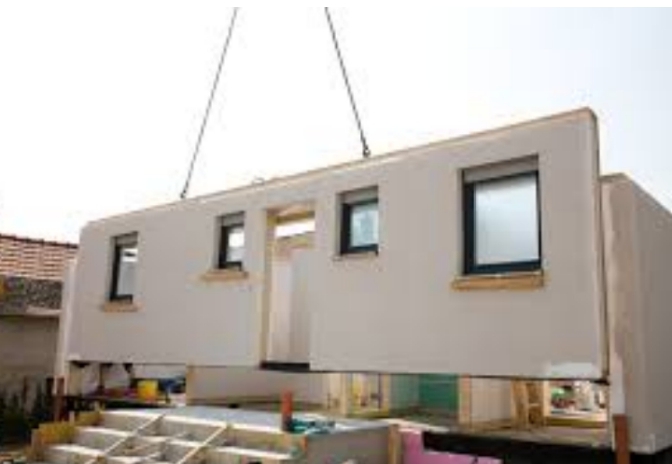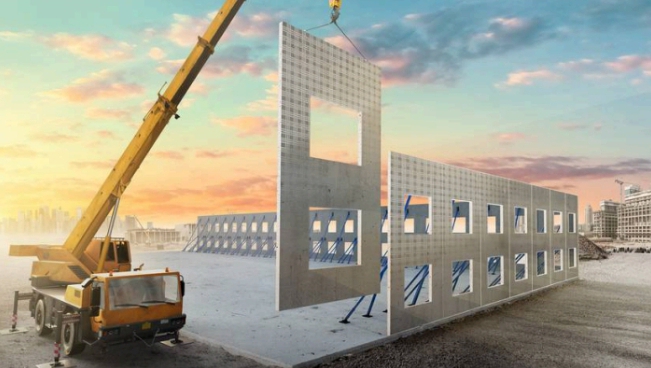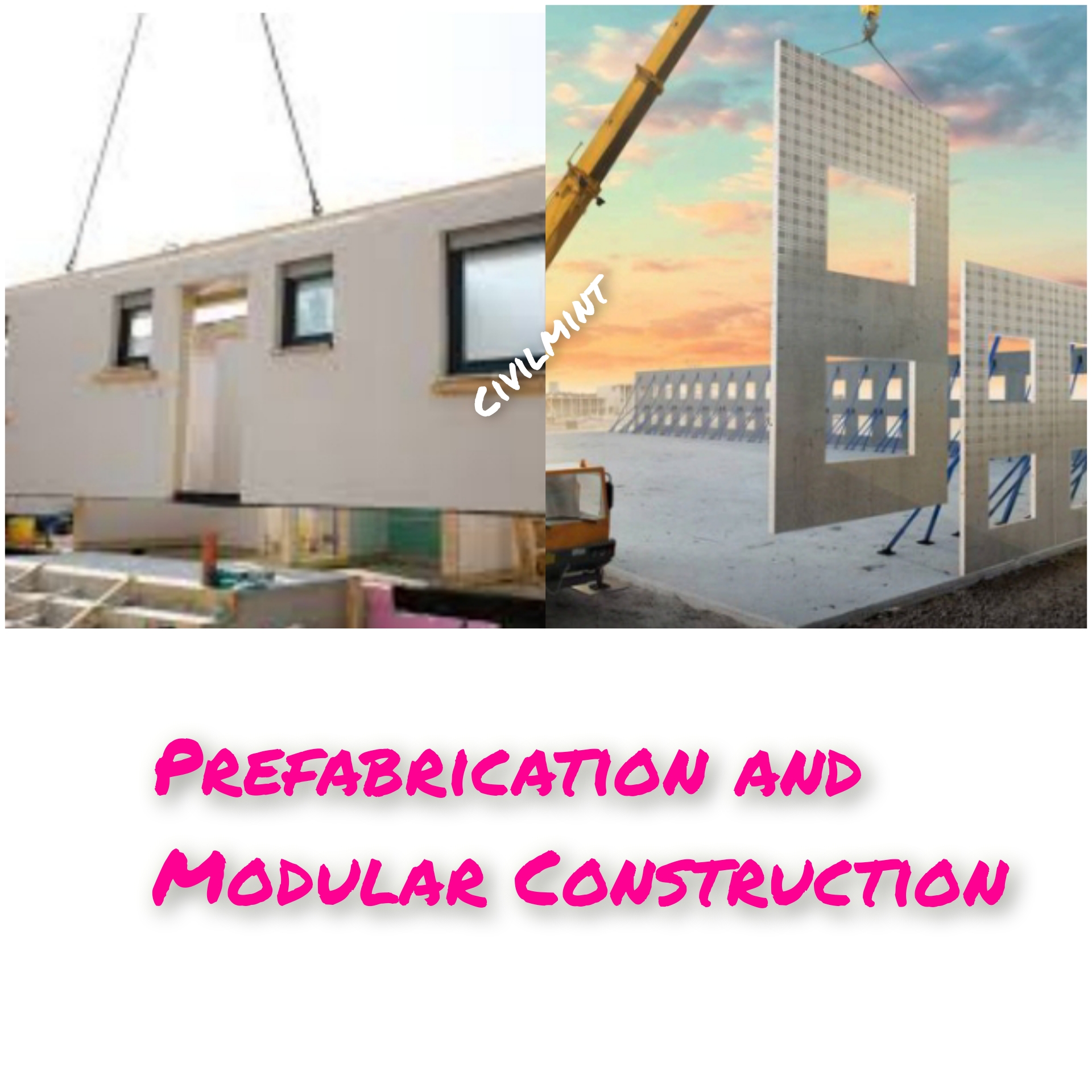Table of Contents
Introduction
The construction sector is facing numerous problems as it seeks to meet the growing demand for high-quality construction projects. In response, the industry is looking into emerging trends to improve speed, efficiency, and sustainability.
Among these techniques, prefabrication and modular construction have emerged as promising alternatives.

Prefabrication involves assembling construction components in a factory before transporting them to the construction site for final installation.
Modular construction, on the other hand, includes manufacturing entire building sections in a factory and transporting them to the job site for final assembly.
Prefabrication and Modular Construction Techniques
In response to the evolving needs of the construction industry, innovative approaches like prefabrication and modular construction have emerged as game-changers. These techniques, characterized by off-site fabrication and assembly, revolutionize traditional building methods by streamlining processes, improving efficiency, and promoting sustainability.

The table below shows some key examples of these transformative practices:
| Techniques | Description | Common Application |
|---|---|---|
| Modular Buildings | Entire sections of a building are constructed off-site and transported to the construction site for final assembly. | Residential, commercial, and industrial structures |
| Prefabricated Concrete Panels | Concrete panels are precast in a factory and transported to the construction site for installation | Walls, floors, and roofs |
| Prefabricated Timber Framing | Timber frames are prefabricated in a factory and transported to the construction site for installation. | Residential and commercial buildings |
| Bathroom Pods | Entire bathrooms are prefabricated off-site and transported to the construction site for installation. | Residential and commercial structures |
| Prefabricated Steel Structures | Steel structures are fabricated in a factory and transported to the construction site for installation. | Industrial and commercial structures, such as warehouses and factories |
Safety Advantages
Modular construction and prefabrication offers a pathway to mitigate construction risks by shifting much of the construction work to a controlled manufacturing environment, where the likelihood of serious injuries and fatalities is minimized compared to on-site construction. Integrating modular and prefabricated components into construction projects can effectively address the primary causes of injuries and fatalities at construction sites.
1. Reduced Risk of Fall-Related Injuries:
By relocating a significant portion of the work off-site, hazardous elements like scaffolding and ladders are minimized, lowering the risk of falls, which are the leading cause of workplace fatalities in construction. This shift reduces the need for working at heights and climbing, thereby decreasing the likelihood of accidents.
2. Reduced Risk of Struck by and Caught-In/Between Injuries:
Unlike traditional construction, prefabricated/modular construction occurs in a controlled factory environment, minimizing the chances of being struck by machinery or equipment. Moreover, fewer workers are onsite, reducing foot traffic and the risk of accidents involving objects or equipment.
3. Reduced Risk of Weather-Related Injuries:
The indoor setting of a manufacturing facility shields workers from weather-related hazards encountered in traditional construction, such as rain delays and slippery surfaces. Eliminating exposure to temperature
extremes and high winds enhances safety during construction.
4. Reduced Risk of Inattention:
Prefabricated modules allow workers to focus on a single, large object rather than multiple moving parts, promoting focused attention during installation. This approach enhances efficiency and reduces distractions, ultimately improving safety on the construction site.
5. Reduced Time on Site Due to Improved Efficiency:
Modular construction typically leads to faster project completion, reducing overall construction time by 30% to 50% compared to traditional methods. This efficiency not only accelerates project timelines but also minimizes workers’ exposure to potential hazards, thereby enhancing safety.
Managing Safety Hazards
Managing safety hazards in modular and prefabricated construction presents unique challenges that require careful attention. While these methods offer advantages over traditional construction, such as enhanced quality and efficiency, they also come with their own set of risks as follows:
1. Cranes:
Modular construction often requires large cranes to lift modules onto the foundation or structure, necessitating a focus on crane safety. Clear understanding of crane capacity and pre-planning hoisting operations are essential to prevent incidents.
2. Rigging:
Customized rigging is often necessary for lifting modular components, highlighting the importance of having the correct rigging equipment and trained personnel.
3. Moving Components on Site:
Pre-job planning is crucial to ensure the safe movement of prefabricated components around the site. Compliance with OSHA standards and avoiding working under or near suspended loads are paramount.
4. Securing Loads:
Proper securing of modular loads during transportation, lifting, and storing is critical. Specialized planning and hiring experienced trucking specialists are recommended for oversized loads.
5. Temporary Connections:
Stabilizing and securing temporary connections during installation require innovative design, training, and preplanning to ensure structural integrity and worker safety.
Conclusion
Prefabrication and modular construction techniques offer substantial safety benefits by shifting much of the construction work to controlled manufacturing environments. These methods effectively mitigate on-site risks associated with traditional construction. However, managing safety hazards in modular and prefabricated construction requires careful attention.
Overall, with proper safety management practices in place, modular and prefabricated construction can significantly improve efficiency and quality while ensuring worker safety on construction sites.

